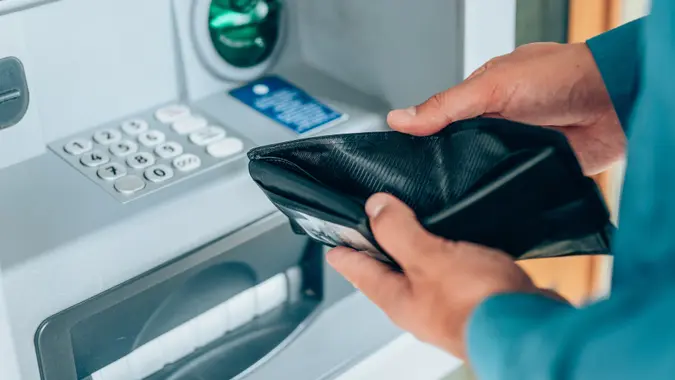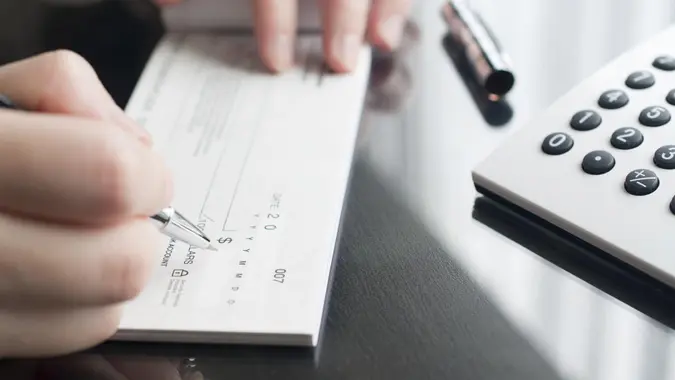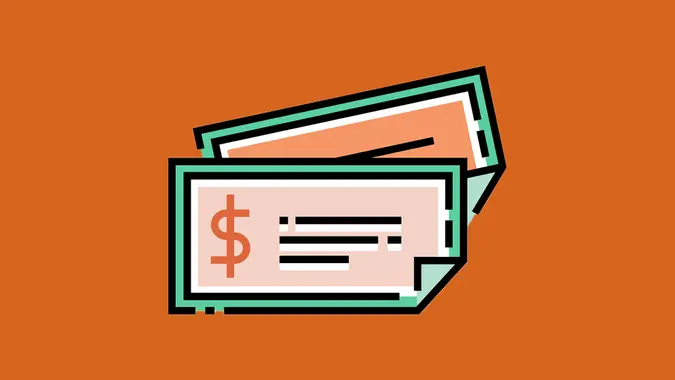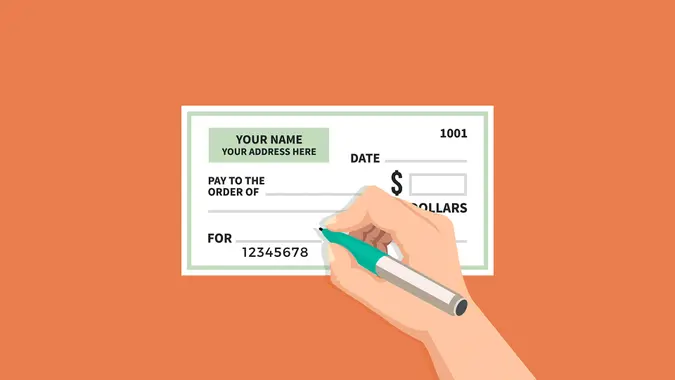I’m a Banking Expert: 4 Things To Do If You Start Getting Charged for Your Checking Account

Commitment to Our Readers
GOBankingRates' editorial team is committed to bringing you unbiased reviews and information. We use data-driven methodologies to evaluate financial products and services - our reviews and ratings are not influenced by advertisers. You can read more about our editorial guidelines and our products and services review methodology.

20 Years
Helping You Live Richer

Reviewed
by Experts

Trusted by
Millions of Readers
Nearly three out of four people don’t pay fees for their checking accounts — but that means a quarter still do. According to CNBC, studies show that 27% of account holders pay to use a bank’s checking services despite an overwhelming selection of free alternatives.
If that’s what you signed up for, fine. But what about those who opened a free checking account only to have their bank start charging them for the same services after they and their money already got used to their new home?
GOBankingRates consulted an industry professional who analyzes bank data for a living about what to do if your bank starts charging you for your checking account. There’s not much to it, but you must act now before the fees start adding up.
Meet the Expert
Ken Tumin is the founder of DepositAccounts by LendingTree. In 2005, Tumin launched the BankDeals blog, which evolved into DepositAccounts, to help readers compare features, accounts and deals at banks and credit unions. He also chronicles his experiences with opening accounts and dealing with different banks so his readers know what to expect in real life.
Unlike virtually all major comparison sites, which promote their advertisers even at the expense of institutions with better rates or deals, DepositAccounts follows what Tumin calls a “not-for-hire” approach to eliminate bias or the perception of bias. His site receives zero compensation from more than 99% of the nearly 12,000 national, regional and local banks and credit unions it lists.
Tumin — whose coverage includes a proprietary “institution health rating” algorithm cited by hundreds of media outlets — is one year shy of two decades at the platform’s helm.
Checking Account Fees: The Most Common Culprits
Banks must disclose all their fees by law, but they have wide latitude in whether or how much to charge for each. According to Fortune and Forbes, the most common checking account fees are:
- Service or maintenance fees: Up to $15 per month or even $25 for premium accounts
- Non-sufficient funds (NSF) fees: Usually $34
- Overdraft fees: Usually $35 per transaction per day — that means another hit for each day your balance remains negative
- Out-of-network ATM fees: Usually $3 to $5 per transaction
- Paper statement fees: $1 to $5 per month
- Wire transfer fees: Typically unavoidable, these fees can cost up to $30 or even more for international transfers
- International transaction fees: 1% to 3% of the purchase total
- Stop payment fees: Up to $35
- Misc. fees: Includes card replacement fees, check fees, cashier’s check fees, dormancy fees and account closure fees
My Bank Started Charging Me for My Checking Account — Now What?
On January 31, a customer posed this question to the Consumer Financial Protection Bureau:
“I opened a ‘free’ checking account. I received a notice from the bank stating that it had decided to start charging monthly fees. Can the bank do this?”
The CFPB responded, “Yes. A bank or credit union can start charging you fees on your account as long as the bank or credit union notifies you in writing at least 30 days before it starts charging fees and explains the change to your account.”
If you receive such a notice, follow these four steps:
1. Determine Your Timeline
As the CFPB stated, the law requires banks to give 30 days’ notice before enacting new fees, but it could be more. Step 1 is to find out exactly when the fee kicks in to avoid unpleasant surprises.
2. Examine the Notice and All Its Details
Read the details of the notice, including the fine print, and if anything is unclear, call or start an online chat.
“Check with the bank to ensure you understand the fee,” said Tumin.
3. Learn What Triggers the Fee and How To Avoid It
Many fees lay dormant until they’re triggered by an action like overdrawing your account. But in other cases, you can take action to avoid being hit with a charge.
“When your bank adds a new fee to your checking account, determine what can be done to avoid the fee,” said Tumin. “Sometimes you can avoid a monthly service fee by maintaining a large enough balance or by having direct deposit.”
4. Take the Money and Run
If your bank won’t waive the fee and you refuse to pay it, the surest way to register your discontent is to close your account and take your money to one of your bank’s many competitors.
“If you can’t avoid the new fee or if you might have trouble in the future avoiding the fee, look for a new checking account,” said Tumin.
Remember that checking accounts are more of a headache to switch than savings accounts. You’ll have to redirect everything you’ve scheduled for autopay, from your mortgage and health insurance to Netflix and credit card payments. You’ll also have to update your direct deposit information with your employer and consider things like branch locations, so make sure you’re switching to the right bank and that you won’t have to repeat the process again in a few months.
Despite the rigmarole, it’s worth it in the end because there’s virtually no reason for anyone to pay for a checking account considering the sheer number of truly free options.
“Many banks and credit unions offer free checking accounts which have no monthly fee regardless of your balance or banking activities,” said Tumin. “Make sure to look online. Many online banks offer free checking accounts with low or no fees for overdrafts and ATM usage.”
 Written by
Written by  Edited by
Edited by 

























